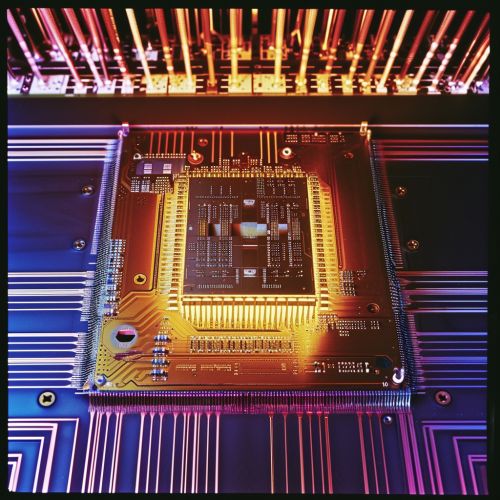Arithmetic Logic Unit
Overview
The Arithmetic Logic Unit (ALU) is a fundamental building block of the CPU in a computer. It performs arithmetic and bitwise operations on binary numbers. This includes addition, subtraction, multiplication, and division, as well as operations such as AND, OR, and XOR. The ALU is a crucial component of the CPU, as it performs the actual computations and logical operations that a computer program needs.
Architecture
The architecture of an ALU varies depending on the specific design of the CPU. However, most ALUs consist of a combination of digital logic circuits, which perform the arithmetic and logic operations, and registers, which store the input and output data. The ALU receives data from the CPU's registers, performs the requested operation, and then sends the result back to the CPU.

Operations
The ALU performs a variety of operations, which can be broadly categorized into arithmetic operations and logic operations.
Arithmetic Operations
Arithmetic operations include addition, subtraction, multiplication, and division. These operations are performed on binary numbers, which are represented as sequences of 0s and 1s. The ALU uses a variety of techniques to perform these operations, including BCD addition, 2's complement addition for subtraction, and Booth's algorithm for multiplication.
Logic Operations
Logic operations include AND, OR, XOR, NOT, and shift operations. These operations are performed on individual bits of the binary numbers. For example, the AND operation outputs a 1 if both input bits are 1, and a 0 otherwise. The OR operation outputs a 1 if at least one of the input bits is 1, and a 0 otherwise.
Design and Implementation
The design and implementation of an ALU depend on the specific requirements of the CPU. However, most ALUs are designed using digital logic circuits, which can be implemented using a variety of technologies, including TTL, CMOS, and FPGA.
The design process typically involves specifying the operations that the ALU needs to perform, designing the digital logic circuits that will perform these operations, and then integrating these circuits into the overall architecture of the CPU.
Role in the CPU
The ALU plays a critical role in the operation of the CPU. It performs the actual computations and logical operations that a computer program requires. The CPU sends data and operation codes to the ALU, which then performs the requested operation and sends the result back to the CPU.
The ALU also plays a role in the execution of machine instructions. Each machine instruction consists of an operation code, which specifies the operation to be performed, and one or more operands, which are the data on which the operation is to be performed. The ALU performs the operation specified by the operation code on the operands.
